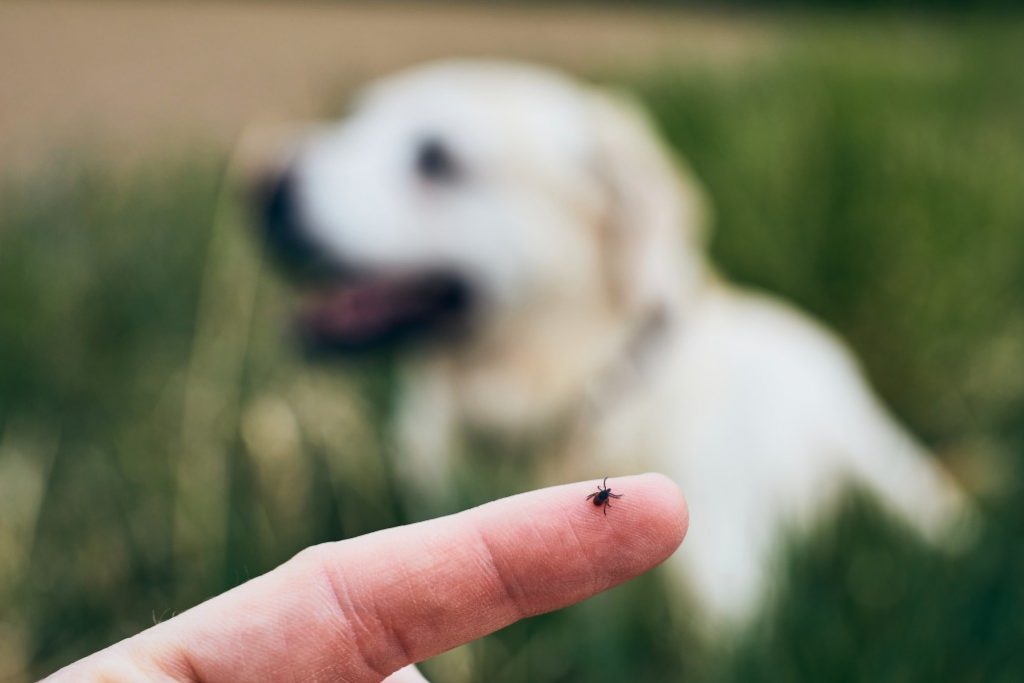
Although flea and tick prevention is a good idea year-round for your dog, it is especially important during the warmer months. During the spring and summer, flea and tick populations explode. Both these pests can cause a variety of health issues in your pets. They can also bring them into your home where they can infest carpets, upholstery, and migrate to humans, so prevention is the best treatment plan.
There are several options available depending on your own preferences, your dog’s reaction to the treatment, and your veterinarian’s recommendations. Research each option and try a few out to see which is the best fit for your family and best friend.
Flea and Tick Collars
These have been around for years and have improved quite a bit since the 1960s when they were first introduced. Today’s collars work for up to eight months, and you can find them for specific weights for optimal effectiveness. Seresto’s flea and tick collar is water-resistant, so your dog can even wear it swimming and still be protected.
If you opt for a collar, make sure you can fit two fingers between the collar and your dog’s neck to prevent any skin irritation. For long-haired dogs, trimming the fur shorter beneath the collar will help it work better.
Oral Medications
These oral flea and tick preventatives are pills or chews that are flavored and can usually be given as a treat at the same time each month to your pet. If your dog is prone to skin irritations, these are an excellent alternative. These do require a prescription from your veterinarian, but they are highly effective and prevent re-infestations.
Topical Treatments
These are quite popular because they don’t require a prescription and are easy to apply just once a month. They are a liquid flea and tick preventative in a small vial or tube that you squeeze onto the back of your dog’s neck and along his or her spine. There, the ingredients will be absorbed into the bloodstream to protect against fleas and ticks.
Shampoos or Dips
Flea shampoos or flea dips are usually given to dogs after their owners have discovered fleas on them. While they do get rid of already present pests, they also protect against re-infestation in the short term. This protection can last a few weeks, but not much longer. Shampoos and dips are messy, however, and stressful for you and your pet. As a short-term treatment, they can be helpful.
Natural Flea and Tick Preventatives
If you prefer holistic alternatives to over-the-counter or prescription flea and tick preventatives, there are other options you can try. These are some of the most popular and effective natural options for preventing flea infestations. Some also repel ticks, but not as well.
- Sprinkle some citrus juice over your pet’s fur (avoid the face) before going outside, as fleas don’t like citrus.
- Apply a few drops of neem oil to your dog’s skin behind the ears, the back of the neck, the middle of the back, and the base of the tail.
- Dilute lavender oil in water and apply by misting your dog’s back with a fine mist periodically. Fleas hate the scent, which has a calming effect on canines. Do not use undiluted.
- Before going outside, spray your dog with a 50/50 mixture of apple cider vinegar and water (avoiding the eyes). Occasionally misting their bedding with the same mixture will keep fleas away from their sleeping area as well. You can also put a teaspoon of apple cider vinegar in each quart of your dog’s drinking water.
Talk to your dog’s veterinarian before starting any new flea and tick prevention treatment to ensure you’re choosing a safe, effective treatment plan. Be sure to administer it at the same time each month and don’t skip any months, as missing even a few weeks can mean a flea infestation or tick bites that can lead to misery for your pet or more severe complications such as Lyme Disease or Rocky Mountain Spotted Fever.
